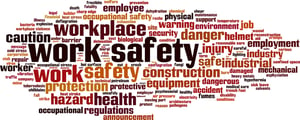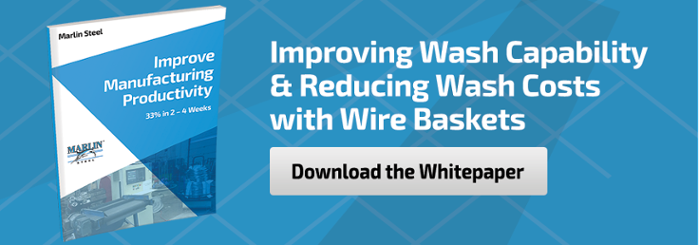 Marlin Steel’s manufacturing team is proud to say that they’ve gone thousands of days without a lost time safety incident. Maintaining a safe manufacturing environment for employees is a critical part of being a successful manufacturer.
Marlin Steel’s manufacturing team is proud to say that they’ve gone thousands of days without a lost time safety incident. Maintaining a safe manufacturing environment for employees is a critical part of being a successful manufacturer.
Safe manufacturing environments encourage productivity, limit production delays, and help keep the most experienced and skillful staff safe and healthy so they can keep doing their best. This is part of the reason why Marlin Steel is so dedicated to keeping its factory floor safe for workers.
Marlin Steel’s dedication to maintaining a safe work environment for employees was recently recognized by OSHA with a SHARP safety designation.
With this in mind, what goes into building a “best in class” manufacturing safety program?
Here are 5 things that Marlin Steel used to build its own safety program to achieve 2,500+ consecutive days of safety and earn the SHARP designation from OSHA:
#1: Automated Manufacturing Equipment
In the years before Marlin Steel moved to Baltimore and changed over to using manufacturing automation to complete the menial labor tasks of bending steel, workplace safety was considerably less than ideal.
It wasn’t uncommon for workers on the factory floor to be missing fingers, or even eyes, as the result of a mishap when handling sharp bits of metal by hand.
The introduction of automated manufacturing equipment did a lot to improve Marlin’s safety as a manufacturer. By adopting manufacturing robots, Marlin was able to move its line workers from doing menial labor to supervising the robots that would do the work.
This limits each worker’s exposure to the dangers of flying metal, cutting equipment, and other common manufacturing hazards, greatly reducing the risk of injury.
#2: Employee Training
Another cornerstone of Marlin’s safety program is Marlin’s strong emphasis on employee training. Not only do employees frequently train in new job skills to operate new equipment and be more flexible, they undergo routine safety training designed to help prevent incidents.
This safety training helps provide employees with the information they need to avoid dangerous situations.
#3: An Employee-Staffed Workplace Safety Committee That is Empowered to Make and Enforce Changes
Sometimes, when a new regulation comes from some suit in management who’s never worked on the line, employees might disregard what that manager has to say. The attitude here is usually something like “what do they know?”
Marlin Steel convenes a special employee-staffed safety committee once a month to identify potential hazards and make proactive changes to prevent injuries on the job. These men and women work in the day-to-day operations of Marlin Steel, and Marlin’s other workers know that any new safety regulations are coming from people who share in their daily challenges.
This committee focuses first on the top 20% of issues that will cause the majority of problems, nipping the worst problems in the bud before they can cause harm.
#4: Outside Input
Marlin’s employee safety committee works hard to pick out safety issues and resolve them ASAP, but sometimes it can pay to get an outside opinion. Marlin Steel invited representatives from CNA, the company’s compensation insurance company, and OSHA, the Occupations Safety and Health Administration, to come in and inspect Marlin’s production facility.
These organizations have a lot of individuals who possess extensive experience in identifying and resolving workplace safety hazards. This experience allows these individuals to easily spot hazards that Marlin’s own team might have missed.
After listening to the suggestions of these experts, Marlin was able to enact more safety measures that would prevent workplace safety incidents while improving the company’s bottom line.
#5: Continuous Effort
Workplace safety isn’t a “set it and forget it” issue. Even after you’ve established a set of safety regulations and drilled your employees in these rules, your work in creating and maintaining a safe workplace isn’t over.
It takes constant vigilance to identify and correct potential safety hazards, as new equipment and business processes may introduce new hazards to the workplace that need to be addressed. New employees need to be put through the employee training as well.
Putting employees through refresher courses for safety practices helps keep them from forgetting safety guidelines.
Basically, whatever you do, to build a “best in class” safety program, you have to keep working at it day in and day out with your employees.
These are some of the most impactful practices that Marlin has put into place for creating a SHARP-ready workplace. Thanks to practices such as these, Marlin Steel is able to be more productive and avoid delays caused by safety incidents on the factory floor.



.gif)


